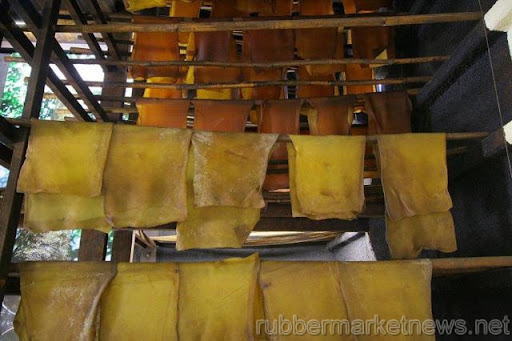 Natural rubber output will increase in the coming weeks as farmers resume harvesting after the traditional low-production season, easing a “tightness” in global supplies, according to the Association of Natural Rubber Producing Countries.
Natural rubber output will increase in the coming weeks as farmers resume harvesting after the traditional low-production season, easing a “tightness” in global supplies, according to the Association of Natural Rubber Producing Countries.
Production from its member countries, representing 92 percent of global supply, may climb 10.5 percent to 2.3 million metric tons in the three months through June, the group said in a monthly bulletin. Output in the first quarter is estimated to have advanced 6.1 percent to 2.27 million tons, the group said.
Rubber futures have surged 16 percent since dropping to a four-month low of 335 yen per kilogram on March 15 after Thailand, Indonesia and Malaysia, the top three growers, joined forces to tackle the slump in prices. The most-active contract gained 2.8 percent to settle at 389.1 yen per kilogram ($4,773 per metric ton) on the Tokyo Commodity Exchange today (Apr 28).
“Increasing production will probably pressure prices amid worries demand may weaken after Japan’s earthquake disrupted the supply chain of auto manufacturing,” Sureerat Kunthongjun, an analyst at AGROW Enterprise Ltd., said by phone from Bangkok.
Full-year output is forecast to grow 5.8 percent to 10.03 million tons, the producers’ group said. Output in Thailand, the largest grower and exporter, may fall to 3.38 million tons from 3.43 million tons estimated last month due to unseasonal heavy rains and floods, the group said.
Minimum Price
Thailand, Indonesia and Malaysia, representing 70 percent of global rubber output, agreed in March on a minimum price of $4 a kilogram after futures plunged 37 percent from a record 535.7 yen reached on Feb. 18. Farmers in Southeast Asia reduce tapping during so-called wintering, from February to May, when trees shed leaves and latex production drops.
Demand for natural rubber in China, India and Malaysia, which account for 48 percent of global usage, may expand in the second quarter, the group said. China’s imports may jump 30 percent in the second quarter, compared with a decline of 22.5 percent in the same period a year ago, the group said. The country may consume 945,000 tons of natural rubber between April and June, more than the 734,000 tons in the first quarter.
Natural rubber imports by India and Malaysia may rise 7 percent and 23 percent respectively in the three months to June, it said.
(Bloomberg, April 28, 2011)
Thursday, April 28, 2011
Rubber Output to Gain as Growers Resume Harvest, ANRPC Says
Labels:
News
Subscribe to:
Post Comments (Atom)
No comments:
Post a Comment